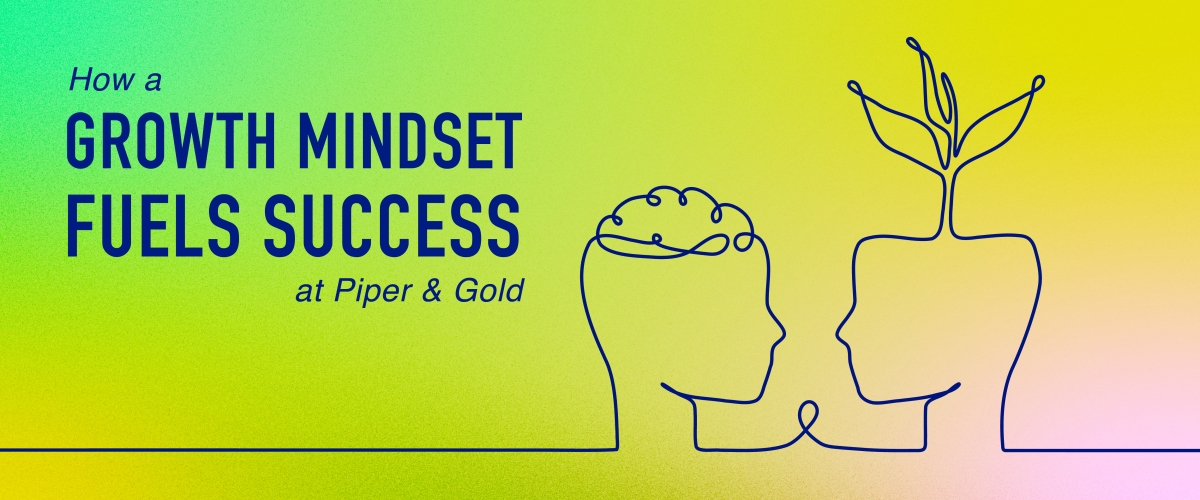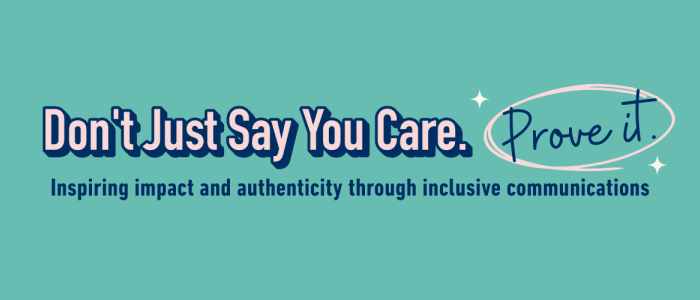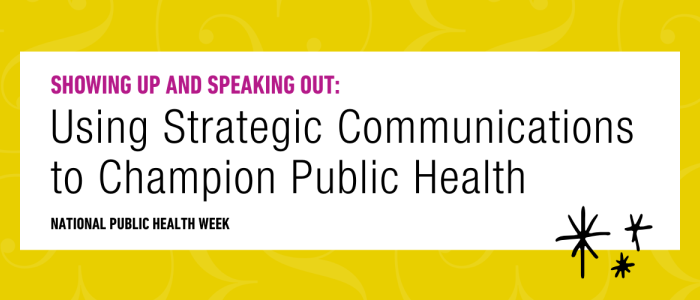
Leadership and learning: How a growth mindset fuels success at Piper & Gold
Aug 26, 2024
Category: P&G culture
In a world where we are our own harshest critics, developing a growth mindset is important. The concept of growth mindset, developed by psychologist Carol Dweck, is about approaching life with the understanding that challenges, failures and difficult situations are opportunities to learn and grow.
At Piper & Gold, we embrace a growth mindset by taking on new challenges and projects with our clients and stepping outside our comfort zones to continue to help shape our greater Lansing community.
I sat down with our president, Cassie Cotton, who wrote about the growth mindset on our blog in 2019. We discussed what a growth mindset is, how hers has evolved since that 2019 article and strategies to adopt a growth mindset. Here is what she had to say:
Grace Mullin: You wrote a blog post in May 2019 about a growth mindset and the impact of learning. What is a growth mindset? What does it mean to be a “lifelong learner”?
Cassie Cotton: When you approach something with a growth mindset, you understand abilities can be developed and improved and that you are never done learning — whether it is personal or professional. Incorporating a growth mindset is an important part of being a lifelong learner because you continuously seek knowledge and skills rather than confining education to a particular period. Lifelong learners enjoy discovering new things and find joy in learning and they set their own goals. They set the intention to actively seek out resources and opportunities, rather than wait for them to come to them. It’s easy to say, “Oh, that is not my lane,” or “That’s not something I do,” but when you adopt a growth mindset, you take on these challenges and see them as opportunities to grow. When I began my career in nonprofit, I was tasked with things I had never done before, and I could have easily turned them down. Instead, I took them on and, through trial and error, adopted new skills I had never thought of doing before.
GM: What are your best strategies to cultivate a growth mindset?
CC: Cultivating a growth mindset boils down to changing how you think about learning. It’s about embracing the new and accepting new challenges, actively seeking these opportunities and running toward them. The curiosity behind learning has to be important to you if you want to adopt a growth mindset. Being curious about insights from others, setting goals and celebrating progress, and seeking feedback from your peers are all great ways to approach a growth mindset. It is important to understand that mistakes and errors are a part of the learning process. You have to stay motivated and focus on how to improve and remain resilient when faced with obstacles and challenges.
GM: What resources do you recommend for someone looking to adopt a growth mindset?
CC: Carol Dweck is the mastermind behind the concept of the growth mindset. I recommend her books, TED Talks and any other resources she shares. I also recommend resources such as Mastermind and LinkedIn Learning because they are great, tangible ways to adopt new skills. Other great resources are exploring topics that interest you, even if they are outside your comfort zone, seeking advice from peers and industry experts, and finding ways to hold yourself accountable for your goals.
GM: You have held many different positions in your tenure at P&G, from associate strategist to president. How have you used a growth mindset to get to where you are today?
CC: Early on, I embraced new challenges as opportunities to learn and grow, rather than obstacles to avoid. When I began my role as president, running a business was new territory for me. I took on many challenges I had no experience with before. However, I embraced these challenges by breaking larger, complex issues into smaller, manageable steps and took on projects that pushed me out of my comfort zone and allowed me to take on new skills. This kept me not only motivated but also allowed me to track my progress and adjust my strategies as needed.
I actively sought out mentors and peers for guidance, learning from their experiences and incorporating best practices into my own leadership style. I celebrate my milestones and successes, and this helped me acknowledge my growth and reinforce a positive mindset. In my role as president, I use my growth mindset to help my team members solve problems — not solve them for them. It’s important to allow them to be the driver in their problem-solving, and I’m just part of their journey. I like to point them in the right direction, toward things such as resources and courses but remain in the passenger seat. Ultimately, my journey from associate strategist to president has been a combination of perseverance, a willingness to learn and a belief in the growth potential that has propelled me from one role to the next at P&G.
GM: Since your blog post, you have become a mom. What does a growth mindset look like for you as a parent and working professional? How has it changed since becoming a mom?
CC: One of the main changes in my growth mindset since becoming a mom is how I approach failures. Parenthood has taught me to accept failures with more grace and resilience, understanding they are part of the learning process for both me and my children. I have also become more patient, recognizing that growth and development take time, both in parenting and in personal and professional pursuits. This shift in my mindset has helped me embrace challenges with a renewed sense of perseverance and adaptability, fostering a positive environment where continuous learning and improvement thrive.
Professionally, my core principles remain unchanged — embracing challenges, learning from setbacks and believing in continuous improvement — and this mindset has come more naturally to me. I’m open to new ideas and strategies that enhance efficiency and productivity. I continuously seek opportunities for professional development, whether through training, mentorship, or learning from colleagues. One significant change is that I strive more intentionally to help others discover and adopt this mindset. Overall, as a parent and working professional, maintaining a growth mindset means seeing every experience as an opportunity to learn, grow and evolve — both personally and in my career at P&G.
GM: What is one piece of advice you want readers who are interested in adopting a growth mindset to take away from this conversation?
CC: Adopting the “yet” mentality is a really simple, tangible way to start practicing a growth mindset. You would be surprised by how many times somebody says “no,” or they doubt their ability to do something. It is important to learn about growth mindset — read about it, research it, get to know it. But from my experience, people have their big “aha” moment when they adopt a “yet” mentality and don’t say “no” to new challenges, opportunities and experiences. Don’t say, “No, this isn’t in my scope of work,” or “This isn’t in my job description.” Instead, say, “I don’t know how to do that yet, but I think I can figure that out.”



